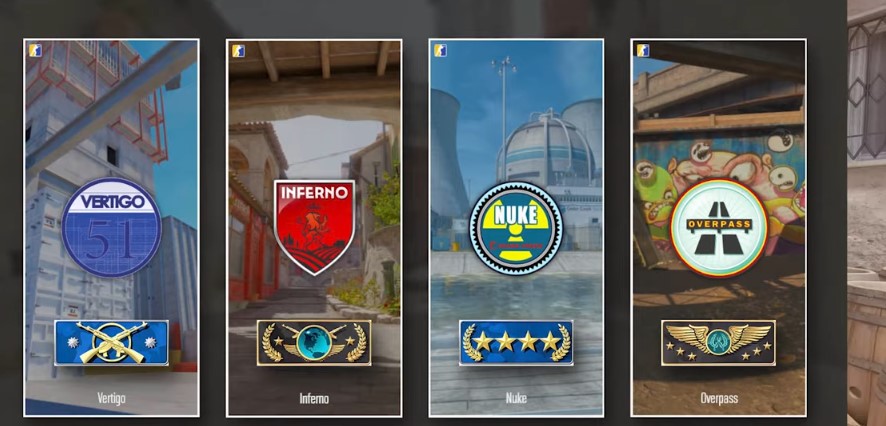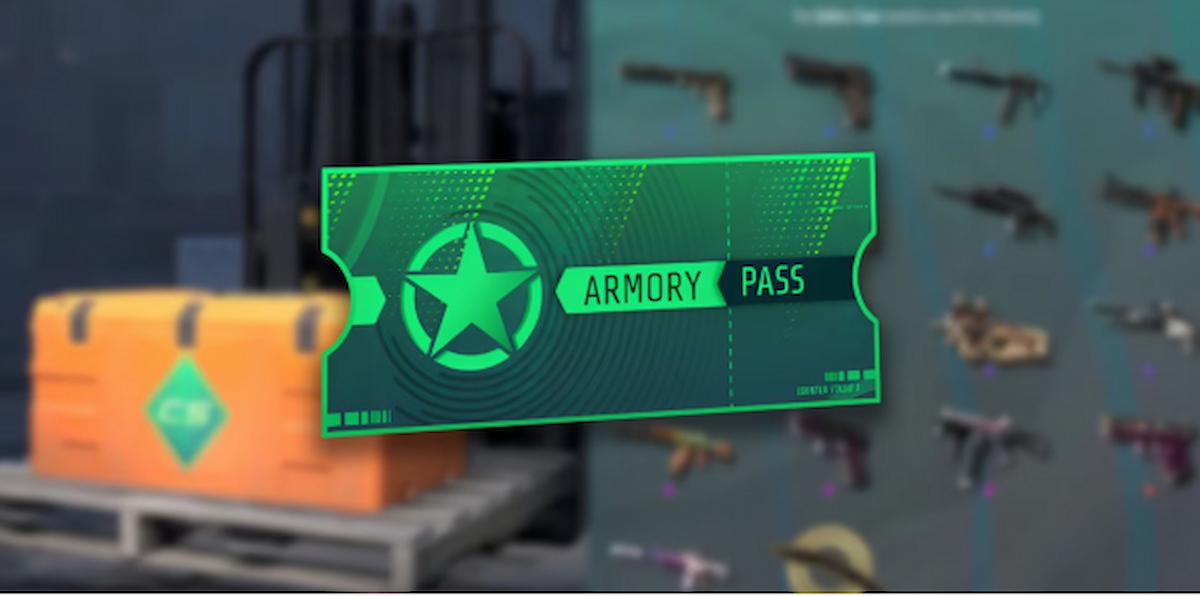Understand the rank and rating system if you are desperate to climb ranks in CounterStrike 2 (CS2). If you’re just starting or looking to sharpen your competitive gameplay skills, this will guide you through the system and show you how to reach Global Elite standing.
The CS2 Rank and Rating is much more than just a badge, it’s a complete evaluation of your gameplay prowess. It runs from Silver I to Global Elite over 18 ranks on six tiers. These CS2 ranks classify the players according to their skill and provide them with truly fair matching, making the experience much more balanced. However, it’s the mapping-specific way CS2 handles its ranking that makes it unique. Unlike its predecessor, CS: Your rank can vary on different maps and GO. That means that a single CS2 map won’t determine your overall rank, instead, it will mean that you have to get better at each map, you can’t keep just improving on one.
By the way, if you’re looking for a good CS2 account with a lot of good skins, let us tell you that at U7BUY, you can buy CS2 account.
Just as it helps to have a powerful CS2 account, you might also want to buy Fortnite account to accelerate your Fortnite gameplay and collect rare items early on.”
Understanding the CS2 Rank and Rating System

In CS2 the MMR is the key part of the ranking system. It’s a measure of your performance at your best given your match results and your performance metrics. Then we’re talking about things like Kills, Deaths, Assists, Utility usage, and more intangible things like positioning, map knowledge, teamwork, etc. The system is not only measuring your play on each CS2 map but at the same time taking into account how you perform in game modes.
Each MMR range corresponds to a specific rank, and understanding these ranges can give you insight into where you stand among the player base. For example, players ranked between 0–4999 MMR typically fall into the Silver I to Gold Nova III range, while players with 25000+ MMR are considered Upper Global Elite.
CS2 Rank Distribution and What It Means
In addition to giving you an individual rank, the CS2 Rank system provides a snapshot of the player base itself. By understanding the MMR distribution across ranks, you can gauge the level of competition you’re facing at each tier. The breakdown of CS2’s ranks looks something like this:
- 0–4999 MMR: Silver I to Gold Nova III (Comparable to Silver–Gold Nova in CS: GO)
- 5000–9999 MMR: Gold Nova Master to Master Guardian II
- 10000–14999 MMR: Master Guardian Elite to Legendary Eagle
- 15000–19999 MMR: Legendary Eagle Master to Supreme Master First Class
- 20000–24999 MMR: Supreme Master First Class to Global Elite
- 25000+ MMR: Upper Global Elite
This distribution ensures that players face opponents of similar skill levels, helping make the competitive environment fairer and more enjoyable.
The Structure of CS2 Ranks
The CS2 Rank structure is broken into several categories based on experience and skill, helping players understand what each rank signifies and where they fit in. Let’s look at the main tiers:
- Beginner Ranks: From Silver I to Silver Elite Master, these ranks are for newcomers who are focusing on mastering basic mechanics, such as aiming and movement.
- Intermediate Ranks: From Gold Nova I to Gold Nova Master, players in these ranks start focusing on more advanced skills like map knowledge, teamwork, and strategy.
- Advanced Ranks: From Master Guardian I to Master Guardian Elite, these players are beginning to refine their skills, with a heavy emphasis on coordination and tactical gameplay.
- Elite Ranks: From Distinguished Master Guardian to Global Elite, these players represent the pinnacle of CS2 proficiency, demonstrating flawless mechanics, superior map control, and advanced strategies.
Understanding this structure helps set realistic goals for your progress. Whether you’re aiming to break into the intermediate CS2 ranks or hoping to achieve Global Elite status, recognizing the skills required for each tier is essential for improvement.
Competitive Mode vs. Premier Mode

CS2 features two main modes where players can climb the ranks: Competitive mode and Premier mode. Both modes use the Matchmaking Rating (MMR) system but differ in their approach.
In Competitive mode, your CS2 rank progression depends on your performance in individual matches. This mode rewards consistent play and performance, including kills, deaths, assists, and match outcomes.
On the other hand, Premier mode introduces a more ELO-based system, which is common in professional competitive games. This system offers more transparency by assigning a numerical value to your CS2 rank, making it easier to track progress and see how each match impacts your standing. To participate in Premier mode, players must purchase Prime Status and complete placement matches, which will determine their starting ELO rating.
Tips for Climbing the Competitive Ladder
In order to become successful in the CS2 ranks, it’s not just about playing regularly, you will need a strategy. Here are some key tips to help you improve
- Aim Training & Map Knowledge: On aim CS2 maps practice for 30-60 mins a day, or through any third-party tools such as the aim trainer by Kovaak. But by learning the specifics of each map, what strategies are common for that map, and what spots are key to winning them — you’ll give yourself a massive tactical advantage.
- Teamwork & Communication: CS2 is a team-based game, so coordinating effectively with your teammates is crucial. Always use voice chat to call out enemy positions, discuss strategies, and relay important information. Strong teamwork can help overcome even the most difficult situations.
- Advanced Utility Usage: Mastering grenades—smokes, flashes, molotovs—can drastically improve your gameplay. Learn where to throw these utilities to control the game’s pace, block sightlines, and support your team in executing strategies.
- Watch and Learn from Professionals: Study professional players to understand how they position themselves, make decisions, and communicate. Adapting and implementing pro strategies into your own gameplay will elevate your CS2 rank.

Maintaining and Protecting Your Rank
Once you’ve reached your desired CS2 rank, maintaining it is just as important. To avoid rank decay, try to play at least one competitive match every month. Your rank won’t degrade if you maintain consistent performance, but staying active is key.
It’s also important to avoid behavior that could result in penalties or bans. Cheating, team-killing, or quitting mid-match can lead to significant setbacks and may even result in a ban. Always adhere to the community guidelines and play fairly to ensure your CS2 rank remains intact.
Comparing CS2 Rank to CS:GO Rank
For players transitioning from CS:GO, several key differences in the ranking system may stand out. One of the biggest changes is the map-specific ranking system in CS2, which makes ranking more dynamic and reflective of your ability to master each map individually. Unlike CS:GO’s more general ranking, CS2 requires you to prove your worth on every map, which encourages versatility and deep game knowledge. But wait, you can get one of the leading platforms for CS2 boosting services. Additionally, CS2’s Premier mode introduces a transparent ELO system, offering a clearer picture of your progress compared to CS:GO’s more abstract ranking system. However, the core elements—performance-based progression and rank hierarchies—remain largely unchanged, so CS:GO players will feel right at home with the overall structure.




